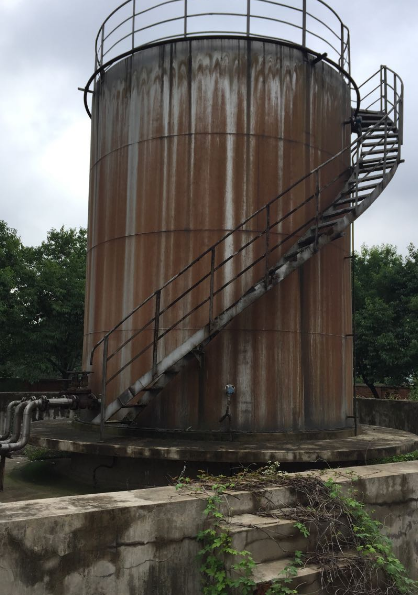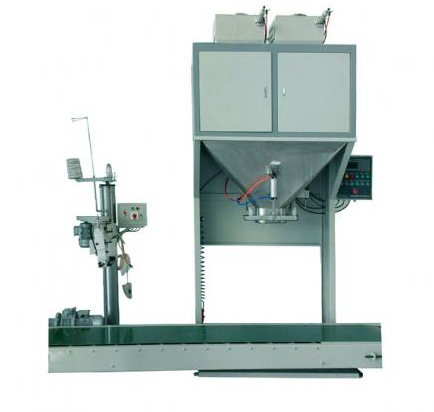How to view the field of intelligent chemical industry?
Although the production equipment control technology of the chemical industry as a whole is significantly different from that of the discrete manufacturing industry, the chemical industry and the discrete manufacturing industry are basically the same from the perspective of the overall digital solution structure of the enterprise. It is currently based on the Purdue Enterprise Reference Architecture (PERA) from the 1990s, as shown in the image above. At the top of this structure is the Enterprise Resources Planning (ERP) layer, which covers all aspects of a company's management and operations: sales, purchasing, production, distribution, human resources, customer service, corporate finance, and so on. The second layer is the Manufacturing Execution System (MES), which is responsible for arranging and coordinating the production equipment of the enterprise to execute and complete the order according to the order instructions issued by the ERP layer. It needs to be emphasized here that compared with discrete manufacturing, the biggest pain point of the traditional PERA architecture in the application scenario of process manufacturing, especially the chemical industry, occurs in this second layer MES. First of all, the key to MES ensuring the timely completion of target orders lies in the accurate estimation of a key parameter, which is called Overall Equipment Effectiveness (OEE), which is a percentage and the product of three percentage indicators.

The three percentage indicators are:
1. availability rate is used to measure the operating rate of equipment (planned time minus downtime, divided by planned time, multiplied by percentage).
2. performance rate is used to measure the efficiency of the equipment (the ratio of the operating speed to the standard operating speed, representing the loss on the work)
3. Quality Rate Measures the percentage of qualified products (the proportion of qualified products to total production)
In the discrete manufacturing industry with relatively strong OEE parameters estimated by MES, the competitive competitors with faster, more accurate, more flexible and more intensive operating performance have become the model template for peers to follow and chase, and in the chemical industry with generally weak OEE parameter estimation ability of MES, the competitive mentality of the players competing on the track is more subtle: Strategically, they play chess around raw materials and energy, but at the tactical level of production and operation, they are more like making sure that they "drive carefully for thousands of years" and then hoping that each other will retire from the game without a fight. So the chemical industry is not so much competing as heavier than rotten ingredients. Then the question comes, compared with discrete manufacturing, why MES in the chemical industry can be so weak to predict OEE parameters, so that there is often so much uncertainty in the delivery of orders on time? The main problem is that the latter three layers of PERA are not as digitalized as discrete manufacturing.

These last three layers are the Supervisory Control and Data Acquisition (SCADA) layer, the control system layer dominated by DCS/ PLCS, and the field production equipment layer connected to various sensors. In simple terms, Layer 3 SCADA in the chemical industry monitors abnormal fault alerts based on real-time data generated by the production line, but does not have predictive maintenance functions. This function is the key function of the MES layer to accurately predict OEE parameters, which can be detected in advance according to daily data 1-2 months before serious abnormalities occur in the aging production equipment and notify the ERP layer to arrange the purchase of new equipment and parts and uninterrupted replacement, so as to avoid the unplanned parking and maintenance major surgery in the above two news. The second layer of control system is mainly based on PID controller, which has no ability of model predictive control (MPC) technology to prospectively control the dynamic behavior of the process from the internal mechanism. At present, most discrete manufacturing industries (such as automobiles and home appliances) can realize the automatic replacement of MPC, while the MPC application rate of chemical industry is still not high, the most simple and intuitive explanation is: using a mathematical model to predict the appearance of a basin of water poured out is far more difficult than predicting the appearance of billiard balls hitting each other. To maximize the value of predictive maintenance and model predictive control in the chemical industry, the key is to be able to create high-precision digital twins for chemical production lines, as in the discrete manufacturing industry, and cloud computing, edge computing and 5G signal technology to measure, transmit and process data in large throughput as the infrastructure to "feed" the digital twin in real time. Although the world is still in the exploratory stage for the commercialization of smart chemical industry, I think the biggest gap between China and Europe and the United States is the chemical digital twin model, rather than cloud computing, edge computing and 5G technology.

There are two necessary prerequisites for the establishment of a digital twin model of chemical process, according to which readers can judge the reality behind the various gimmick advertisements advocating smart chemical industry on the public number, or to judge the feasibility and inherent potential of a chemical enterprise to realize the concept of smart chemical industry independently. And it is used to judge whether the newly opened intelligent chemical professional courses in universities will be useful in enterprises in the future: The first prerequisite is to have a self-developed process package, that is, to master the full set of properties of the catalyst, solvent, adsorbent, the full set of thermodynamic and reaction kinetic properties of the raw material and product mixture, as well as mass, heat and hydraulic properties based on the complex phase interface of the equipment material and the internal geometry. These data are obtained through continuous trial and error verification in the stages of lab, bench, pilot and full-scale, which is the foundation of establishing the digital twin model. You can't get that data just by throwing money at someone else's craft package. The second premise is good and reliable industrial software, which I will discuss in detail here. A good chemical industry software can assist engineers to provide seamless digital services throughout the entire life cycle from the development and design of process packages, to the construction and commissioning of engineering, to the operation of the plant until the final decommissioning. Specifically, a good software, its physical property model library, database and algorithm library should be complete, and the software architecture should be thoughtful about the scenario needs of various customers. In addition, a very important software feature that is easily overlooked by users is the transformation of the process model solution mode: the seamless transformation from Sequential modular (SM) to Equation oriented (EO) mode in the process simulation environment. SM mode is suitable for the convergence and debugging of each sub-module in the modeling process, but once the process model is built, it will be very slow to solve the huge and complex process model (everyone knows that), while EO mode solves the complex process model very fast, but the convergence is highly dependent on the initial guess value of each flow stock and equipment of the model. Therefore, the common practice in large-scale process simulation design is to first use SM modeling to ensure initial convergence to obtain the initial value of each flow of the process, and then save the obtained initial value for EO mode to ensure that the model can be solved quickly every time in the future.

For the seamless SM to EO conversion function, Aspen Tech, Schneider electric and Honeywell software products are good, but the best is Siemens gPROMS, because gPROMS internal itself is EO mode. EO mode is important because the digital twin model needed to realize MPC must be dynamic model, and the solution of dynamic model must be in EO mode. In addition to implementing MPC for PERA's Layer 2 control systems, high-quality dynamic models are key to providing predictive maintenance capabilities for Layer 3 SCADA in PERA's architecture. In addition to the above functions, the software should also have the function of one-click conversion of the steady-state model into a detailed engineering design diagram, which is directly used to guide the FEED and EPC work after the process package design and before the start and acceptance, so as to speed up the smooth start and acceptance time of the built plant. In addition, there is the ability to easily convert dynamic models into virtual reality operator training systems (OTS) for employees, which can reduce the time to train operators from several years to 6-9 months. This function will bring great improvement to the current situation of the first-line operators in the chemical industry. These industrial software capabilities are an important part of the smart chemical concept to maximize value at every stage of the life cycle, from process package development to plant decommissioning. Finally, let's talk about the future market development of intelligent chemical industry. Although the penetration rate of advanced process control technology popularized in discrete manufacturing is not high in the chemical industry, it will double in the next few years, so as to promote the commercialization of smart chemical industry. The following is the famous American manufacturing market analysis think tank Grandview Research for advanced process control technology in the chemical industry market size forecast, it is expected that by 2025, the global advanced process control technology market will grow from $10.7 billion in 2015 to $24.9 billion.
Compared with the $1 trillion market size of the chemical industry, the control technology industry's $24.9 billion looks a little dwarfed. But don't forget that the equipment cost of intelligent chemical control technology (sensors, data transmission lines, network signal equipment, cloud equipment, etc.) is several orders of magnitude smaller than chemical production equipment, and the marginal cost of industrial software, models, and core algorithms is close to zero. The number of mainstream players in this industry segment is only a few, and because each player has his own moat, the business competition pattern has remained unchanged for decades, and the same is expected in the future on the new track of intelligent chemical industry.
- EMERSON
- Honeywell
- CTI
- Rolls-Royce
- General Electric
- Woodward
- Yaskawa
- xYCOM
- Motorola
- Siemens
- Rockwell
- ABB
- B&R
- HIMA
- Construction site
- electricity
- Automobile market
- PLC
- DCS
- Motor drivers
- VSD
- Implications
- cement
- CO2
- CEM
- methane
- Artificial intelligence
- Titanic
- Solar energy
- Hydrogen fuel cell
- Hydrogen and fuel cells
- Hydrogen and oxygen fuel cells
- tyre
- Chemical fiber
- dynamo
- corpuscle
- Pulp and paper
- printing
- fossil
- FANUC
- Food and beverage
- Life science
- Sewage treatment
- Personal care
- electricity
- boats
- infrastructure
- Automobile industry
- metallurgy
- Nuclear power generation
- Geothermal power generation
- Water and wastewater
- Infrastructure construction
- Mine hazard
- steel
- papermaking
- Natural gas industry
- Infrastructure construction
- Power and energy
- Rubber and plastic
- Renewable energy
- pharmacy
- mining
- Plastic industry
- Schneider
- Kongsberg
- NI
- Wind energy
- International petroleum
- International new energy network
- gas
- WATLOW
- ProSoft
- SEW
- wind
- ADVANCED
- Reliance
- YOKOGAWA
- TRICONEX
- FOXBORO
- METSO
- MAN
- Advantest
- ADVANCED
- ALSTOM
- Control Wave
- AB
- AMAT
- STUDER
- KONGSBERG
- MOTOROLA
- DANAHER MOTION
- Bently
- Galil
- EATON
- MOLEX
- Triconex
- DEIF
- B&W
- ZYGO
- Aerotech
- DANFOSS
- KOLLMORGEN
- Beijer
- Endress+Hauser
- MOOG
- KB
- Moxa
- Rexroth
- YAMAHA
- Johnson
- Westinghouse
- WAGO
- TOSHIBA
- TEKTRONIX


Email:wang@kongjiangauto.com



































































































































